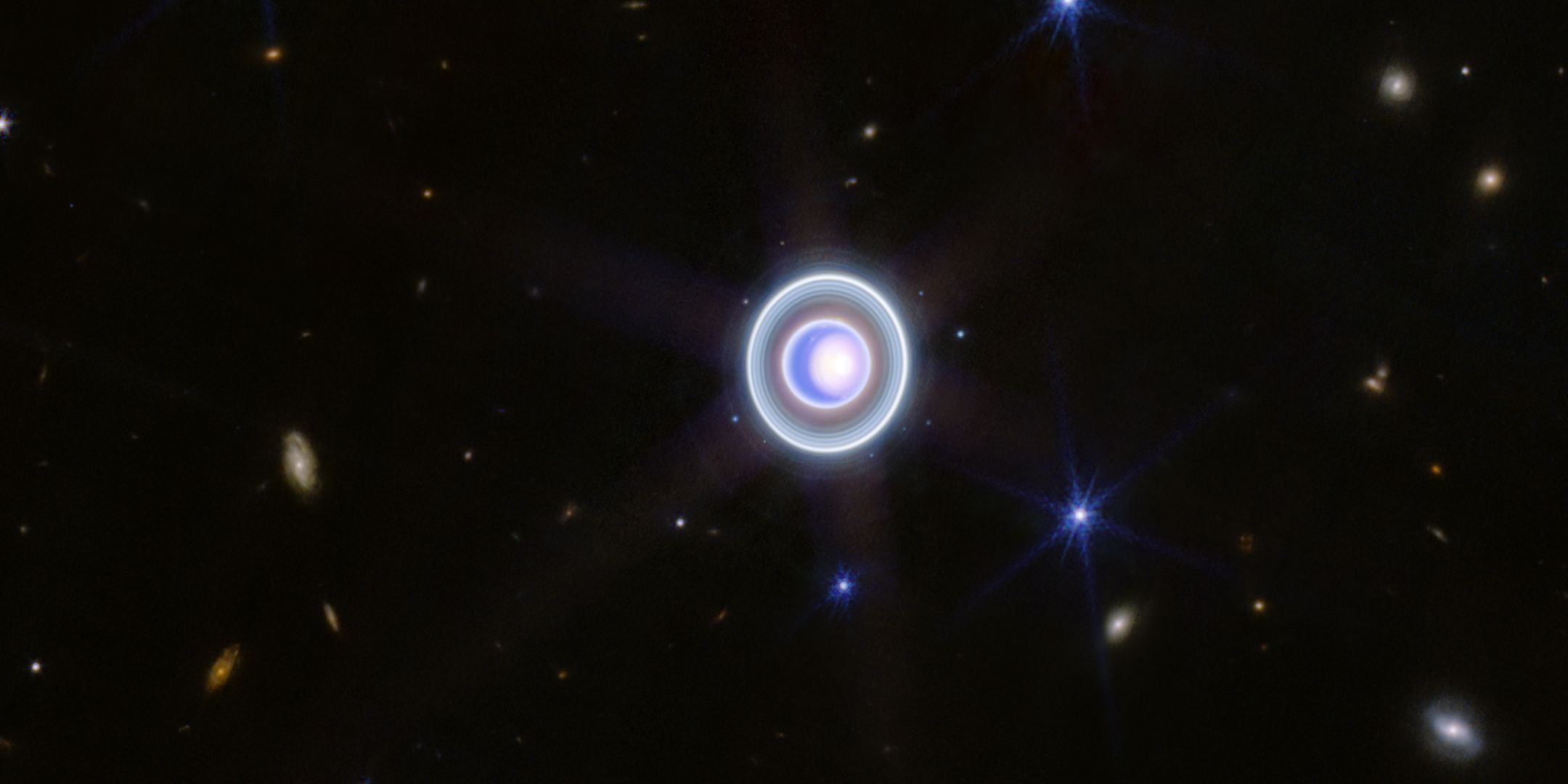Using the James Webb Space Telescope (JWST), astronomers have discovered a strange disk of gas and dust around an infant star that could challenge current models of planet formation. The protoplanetary disk has an odd chemical composition. It features a surprisingly high concentration of carbon dioxide in the region in which rocky planets like Earth are expected to form and …
Read More »Tag Archives: Webb
Webb observations of interstellar comet 3I/ATLAS
The NASA/ESA/CSA James Webb Space Telescope observed interstellar comet 3I/ATLAS on 6 August 2025 using its Near-Infrared Spectrograph. The research team is analysing Webb’s data, with a preprint now available online. Webb is one of several space telescopes studying this comet, helping to reveal its size, physical properties, and chemical composition. For example, the NASA/ESA Hubble Space Telescope and NASA’s …
Read More »'Butterfly Nebula' spreads its fiery wings in dazzling new James Webb telescope image – Live Science
‘Butterfly Nebula’ spreads its fiery wings in dazzling new James Webb telescope image Live Science Webb investigates complex heart of a cosmic butterfly European Space Agency A dead ‘sun’ forms building blocks of exoplanets in new JWST Butterfly Nebula image Space Cosmic butterfly reveals clues to Earth’s creation The Royal Astronomical Society An unprecedented look into a butterfly nebula from the James Webb Telescope New …
Read More »Webb investigates complex heart of a cosmic butterfly
Science & Exploration 27/08/2025 1143 views 32 likes The NASA/ESA/CSA James Webb Space Telescope has revealed new details in the core of the Butterfly Nebula, NGC 6302. From the dense, dusty torus that surrounds the star hidden at the centre of the nebula to its outflowing jets, the Webb observations reveal many new discoveries that paint a never-before-seen portrait of …
Read More »James Webb Space Telescope’s first observation of interstellar comet 3I/ATLAS reveals something strange
Researchers used NASA’s James Webb Space Telescope to observe 3I/ATLAS on Aug. 6. (Image credit: NASA/James Webb Space Telescope) Astronomers have found something strange in the James Webb Space Telescope‘s first images of interstellar comet 3I/ATLAS as it hurtles toward our sun, according to a new study. The telescope’s initial observations suggested that 3I/ATLAS has one of the highest carbon …
Read More »NASA James Webb Space Telescope observes interstellar comet 3i/ATLAS
Aug. 27 (UPI) — NASA observed interstellar comet 3I/ATLAS through the lens of the James Webb Space Telescope for the first time. On Aug. 6, the telescope with its near-infrared Spectrograph instrument analyzed the comet as it provided more information about its size, physical properties, and chemical makeup. This kind of observation can help make clear what conditions were like …
Read More »The First Webb Telescope Observations of 3I/ATLAS | by Avi Loeb | Aug, 2025
Press enter or click to view image in full size Spectrally integrated flux maps for 3I/ATLAS observed by the NIRSpec instrument on the Webb telescope. Panel (a) shows the scattered sunlight around 3I/ATLAS on a scale of a few thousand kilometers (smaller by a factor of a hundred than the size of the CO2 plume detected by SPHEREx) at a …
Read More »James Webb Space Telescope takes 1st look at interstellar comet 3I/ATLAS with unexpected results
The James Webb Space Telescope (JWST) has observed the interstellar visitor 3I/ATLAS for the first time. The powerful space telescope trained its infrared vision and its Near-Infrared Spectrograph instrument (NIRspec) on the comet on Aug. 6, 2025. Discovered on July 1 by the ATLAS (Asteroid Terrestrial-impact Last Alert System) survey telescope, 3I/ATLAS is just the third-ever object found drifting through …
Read More »"Shocking Spiral Secret": Webb Telescope Shows 60% Galaxies Turning Clockwise, Stirring Alarming Theory of Universe Inside Black Hole – Rude Baguette
“Shocking Spiral Secret”: Webb Telescope Shows 60% Galaxies Turning Clockwise, Stirring Alarming Theory of Universe Inside Black Hole Rude Baguette New space discoveries: Is an alien probe headed our way? Are we living inside a black hole? Central Oregon Daily All most shocking discoveries of the James Webb telescope since beginning of its operation MSN “Terrifying Cosmic Trap”: Kansas State Researchers Reveal Galaxies …
Read More »NASA’s Webb Telescope Discovers New Hidden Uranus Moon, Astronomer Explains Its Significance
Astronomers using NASA’s James Webb Space Telescope have discovered a tiny new moon orbiting Uranus, a rare discovery that expands Uranus’ total known moons to 29, and the first inner one found in nearly 40 years. Provisionally named S/2025 U1, the hidden moon was first detected on February 2, 2025, and at just 10 kilometers (six miles) wide it is …
Read More »






